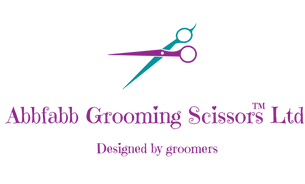In the world of dog grooming scissors, there are many variables to the scissors a dog groomer may use... there’s a lot to choose from and a lot to decide on. There is even a lot of variation among the dog grooming scissor types. One of the most common questions asked is about scissor edges, and what they mean. So here is a little guide to help dog groomers understand the difference between convex, bevel and serrated edge scissors.
Blade Edges used for Dog Grooming Scissors.
Broadly speaking, there are only 3 main types of scissor edge: bevelled, convex and serrated. So what is the difference between these different edge types and how do they benefit the dog groomer?
The Convex Edge.
A convex edge is the sharpest edge a dog groomer can get on a pair of dog grooming scissors. They are also known by three other names: hamaguri-ba, clam shell, and most commonly, Japanese style. All convex-edged are hollow ground on the inside of the blade which gives a very smooth cutting action.
Convex dog grooming scissors are perfect for most dog coat types, especially naturally coarse coats and performs beautifully with all scissoring techniques.
The only downside to a convex blade is that it can lose its edge if not handled or stored correctly. Also, applying too much pressure from the thumb, keeping the scissor's tension loose or loose in the same pocket as other scissors or dropping them, will also damage the blades.
The Bevel Edge.
A beveled or German edge is the oldest and most long-lasting blade design. The cutting edge is very sharp, and the angle of the edge allows for outstanding durability.
A beveled edge usually requires one or both blade edges to be serrated, which holds the hair and prevents is from being pushed forward when cut. This type of edge is suitable for creating sharp finishes on most dog coat types.
Difference between Convex Edge and Beveled Edge.

The Micro-Serrated Edge.
As the name suggests, a micro-serrated edge is a series of very fine grooves machined into the cutting edges of your dog grooming scissors, as seen in the picture below. The serrated edge has micro serrations along the tire length of the blade.
It is fairly common for thinning scissors and blending scissors to have additional micro serrated teeth on the end of each individual tooth, as these additional teeth help 'grab' the coat as the scissor's blades are closing and allowing the cut to be more precise.
A dog groomer must own at least one pair of micro-serrated dog grooming scissors as they not only contribute towards a beautiful finish on the trim, but it is a great option for linty coat types such as a Bedlington Terrier and a Dandie Dinmont Terrier coat. To view Abbfabb's full collection of micro serrated dog grooming scissors, click here.

Which edge is best?
This may seem like tough call to make as all of the scissor blades are good for different reasons. Overall though, for dog groomers, a convex edge is the most versatile and can be used on most dog coat types. A dog groomer can use any technique with a convex edge scissor, unlike bevel and serrated edge scissors, where these tend to be more dog coat specific. To view Abbfabb's full dog grooming scissor collection, click here.



